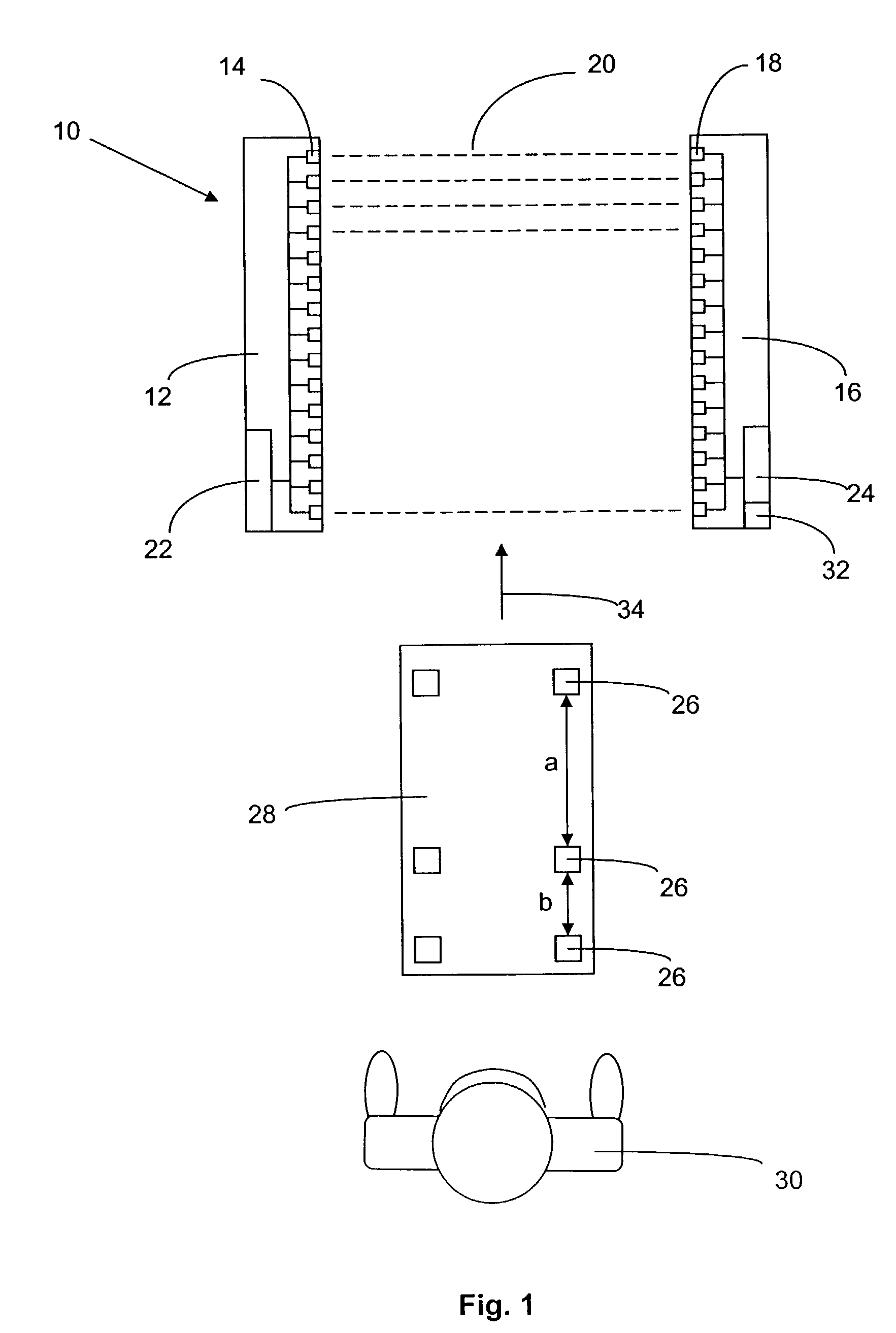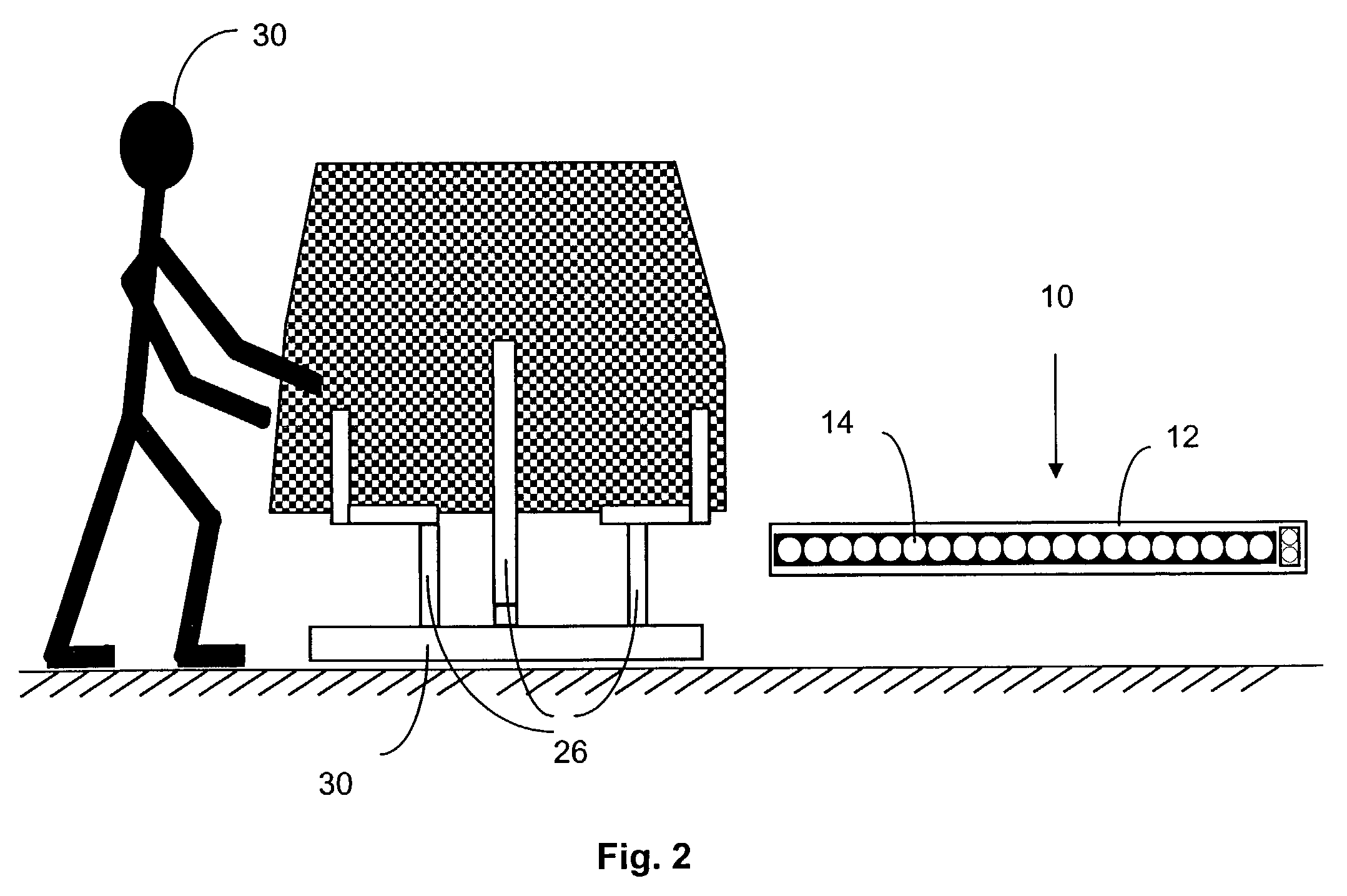Method for detecting objects and light barrier grid
a technology of applied in the field of methods for detecting objects and light barriers, can solve the problem that the system cannot be impermissiblely manipulated, and achieve the effect of simplifying the setup and adjustment of the system, being more versatile and simple to design
- Summary
- Abstract
- Description
- Claims
- Application Information
AI Technical Summary
Benefits of technology
Problems solved by technology
Method used
Image
Examples
Embodiment Construction
[0027]The light barrier grid 10 of the present invention has a light emitting bar 12 which mounts a number of adjacent light emitters arranged in a row. A light receiving bar 16 has light receptors 18 which correspond to light emitters 14 and which are also arranged next to each other. Respective opposing light emitters 14 and light receptors 18 define a multitude of parallel light barriers 20 in a generally known manner. The light beams between the emitters and the receptors are shown in phantom lines in FIG. 1.
[0028]Thus, light barrier grid 10 with its light barriers 20 defines a control area with a protected space between light emitting bar 12 and light receiving bar 16. In the illustrated embodiment, the light emitting bar 12 and the light receiving bar 16 each have a control and evaluation unit 22, 24. Control and evaluation unit 22 controls the individual light emitters 14 of emitting bar 12, and control and evaluation unit 24 of the receiving bar controls light receptors 18 a...
PUM
 Login to View More
Login to View More Abstract
Description
Claims
Application Information
 Login to View More
Login to View More - R&D
- Intellectual Property
- Life Sciences
- Materials
- Tech Scout
- Unparalleled Data Quality
- Higher Quality Content
- 60% Fewer Hallucinations
Browse by: Latest US Patents, China's latest patents, Technical Efficacy Thesaurus, Application Domain, Technology Topic, Popular Technical Reports.
© 2025 PatSnap. All rights reserved.Legal|Privacy policy|Modern Slavery Act Transparency Statement|Sitemap|About US| Contact US: help@patsnap.com



